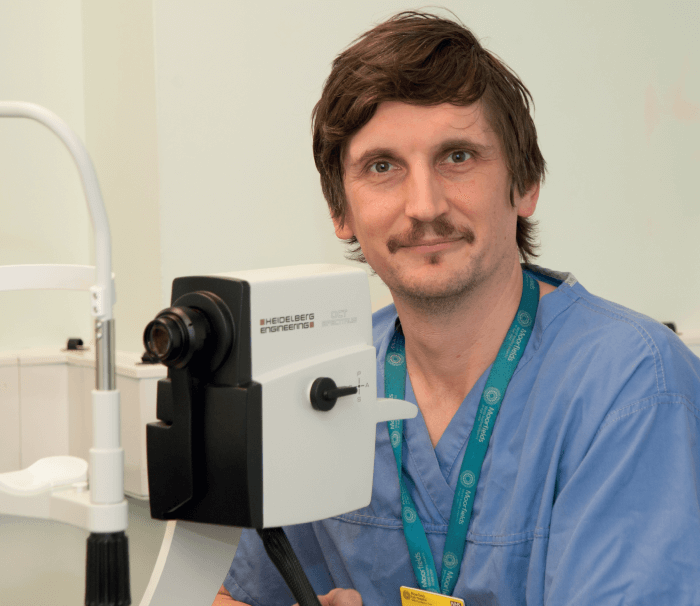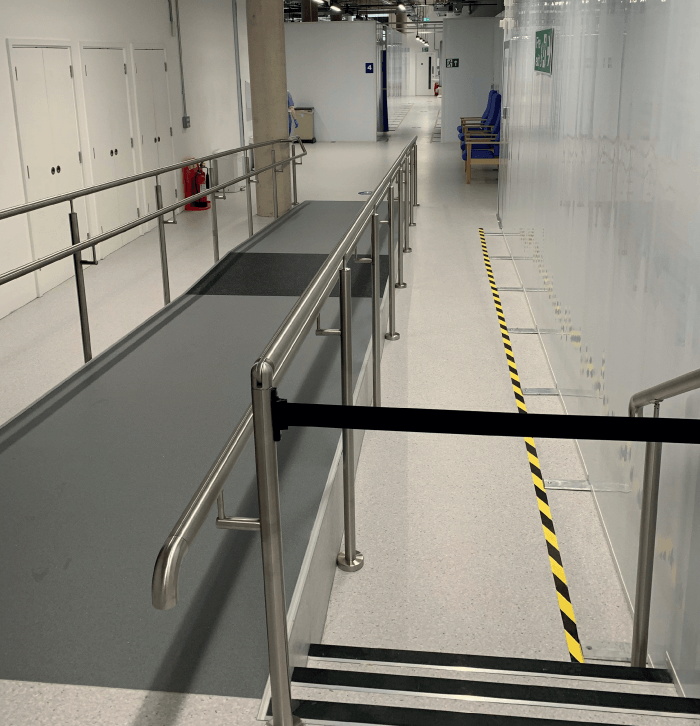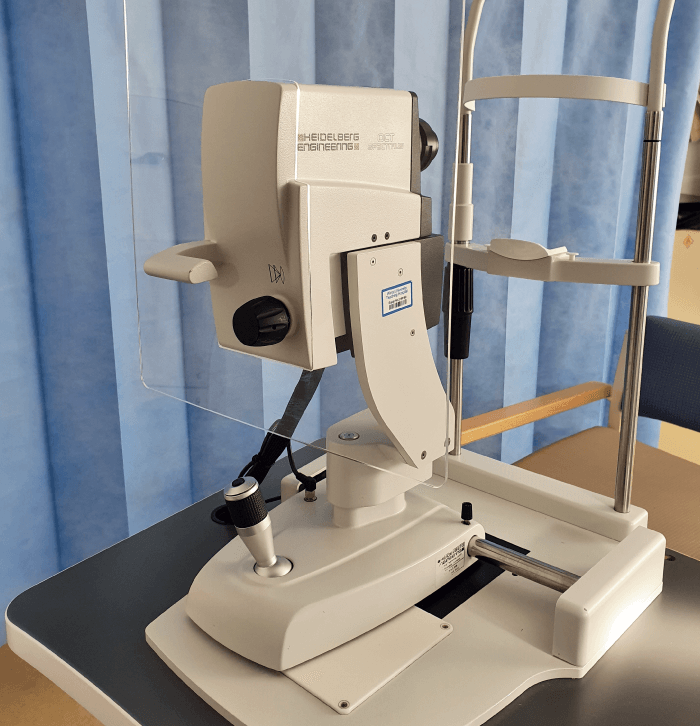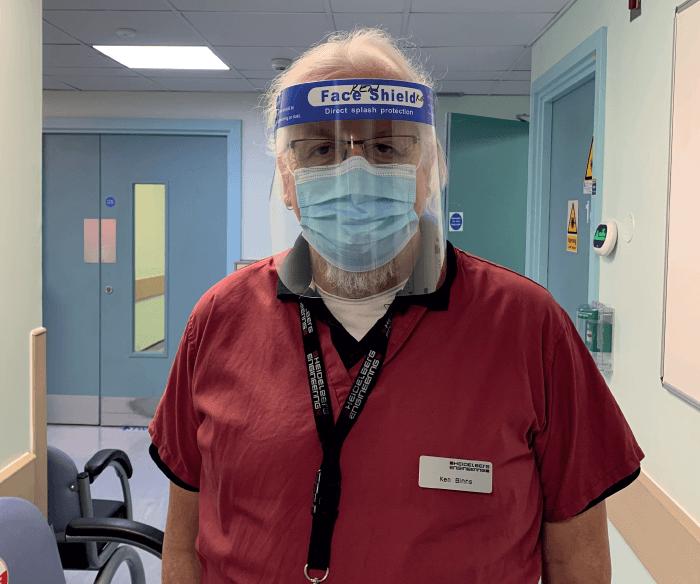
Moorfields Eye Hospital in London, UK, is launching new diagnostic hubs to safely assess more patients during the COVID-19 pandemic. The first hub opened its doors on February 1, 2021, in Hoxton, London, and additional hubs are planned to open later in 2021. Peter Holm took the role of the Head of Imaging and Ultrasound at Moorfields Eye Hospital in April 2020, after several years as a Senior Ophthalmic Photographer at Moorfields and in the private sector. He set to work piloting the hub model at the hospital. “We started by splitting the equipment up on the lower ground floor into hubs for uveitis, ocular oncology, and medical retina,” says Holm. “The aim was to enable patients to be seen in a socially distanced manner and minimize social contact”.
The pilot was successful, and the decision was taken to invest in dedicated diagnostic hubs at locations in London selected for ease of patient access, including Hoxton. As Holm explains, “The purpose of these hubs is to ensure patients have as little social contact as possible, while getting high-quality diagnostics to the same standard they could expect to receive at Moorfields Eye Hospital on City Road.” The operation is slick: in a 45-minute appointment slot the patient arrives at the venue and moves through the building via a rapid but well thought-out one-way system, undergoing several diagnostic tests. There are no staircases for the patient to contend with and no waiting rooms to endure. Holm elaborates: “The hubs need to be efficient, fluid, and safe. We are seeing 70 patients a day and expect that number to rise as we become more familiar with the workflow and equipment. Our approach is reducing the waiting list and backlog of appointments caused by cancellations during the COVID-19 pandemic. It also provides the patient with the option of an appointment in a spacious venue that feels COVID-19-secure and is less intimidating than the traditional hospital environment.” The images are reviewed by the doctors virtually and patients are contacted within 48 hours of attending the hub.

The ophthalmic equipment chosen for the hubs has been carefully hand-picked, and the cornerstone is the OCT. As Holm puts it: “When choosing an OCT, it was all about opting for high-quality, high-resolution images. As the patient isn’t going to be seeing the doctor face-to-face, the appointment at the hub is 100 percent diagnostic focused. The OCT images are imperative for the doctor to be able to make a diagnosis and assign the right treatment pathway, so image quality and detail is everything.” Three SPECTRALIS instruments with BluePeak autofluorescence and MultiColor imaging were chosen for medical retina imaging. “For me personally, the resolution of the SPECTRALIS, the ability to scan the vertical axis and rotate the scan when imaging challenging patients, and it’s excellence in imaging highly myopic patients made it the first choice,” says Holm. The confocal scanning laser technology employed by the SPECTRALIS has aided rapid assessment at the hub. “For me, the SPECTRALIS is by far the best OCT for imaging patients with small pupils. We have the ability to see around cataracts and get a really good image with little dilation.”
It was important to choose user-friendly equipment for the hub and comprehensive training for the staff. “We chose the slimline model of the SPECTRALIS, which has a joystick button for ease of use. At first, team members are a little intimidated by the instrument, but once they get used to it, they enjoy the level of control they have over the scanning,” explains Holm. “The SPECTRALIS encourages basic good photography skills and there is flexibility in its operation that enables technicians to achieve a better scan. We are finding some patients had previously been scanned unsuccessfully on other machines, but we have now obtained images using the SPECTRALIS. This has been a revelation to the doctor and has really helped with their diagnostics.”

And the benefits of such flexible scanning are even tangible to the patients. “We had a patient who had previously experienced head trauma and had nystagmus. They traveled to the hub but were despondent because attempts to image their eye typically fail. With SPECTRALIS we got good line scans. The patient was happy; we were happy we didn’t have to let them down – and the doctor was delighted and surprised that we got images,” says Holm.
The familiarity of the equipment used at the hub also provides peace of mind to the patients. “The patients are shrewd, and many ask what OCT will be used at their appointment,” says Holm. “They may be used to attending Moorfields at City Road and they may have been scanned with a SPECTRALIS before. Using the same equipment at the hub helped reassure them that they are receiving the same standard of diagnostic care as they would at City Road.”
Everyone who is recruited to operate diagnostic instruments at the hub goes through a two-day online course and an industry partners training day. At the industry partner day, Heidelberg Engineering experts show how to acquire images using the SPECTRALIS. Holm elaborates: “Having the industry partners involved was key to the success of the training program, and everyone valued the training received. Our local clinical application specialist from Heidelberg Engineering, Ken Binns, is very knowledgeable. The doctors couldn’t believe how good the images were, given that they had been acquired by staff who had only been in the job for two months.”

Heidelberg Engineering Limited General Manager Tosh Vadhia took a personal interest in equipping the diagnostic hubs. “I am delighted that Moorfields NHS Trust have upgraded their multimodal diagnostic imaging capabilities,” he says. “I strongly felt that with SPECTRALIS we could offer the quality the Trust needed to fulfil their duty of care towards the patients attending the hubs and provide the best diagnostics for the doctors. I am proud that we are genuinely supporting better patient outcomes.”
